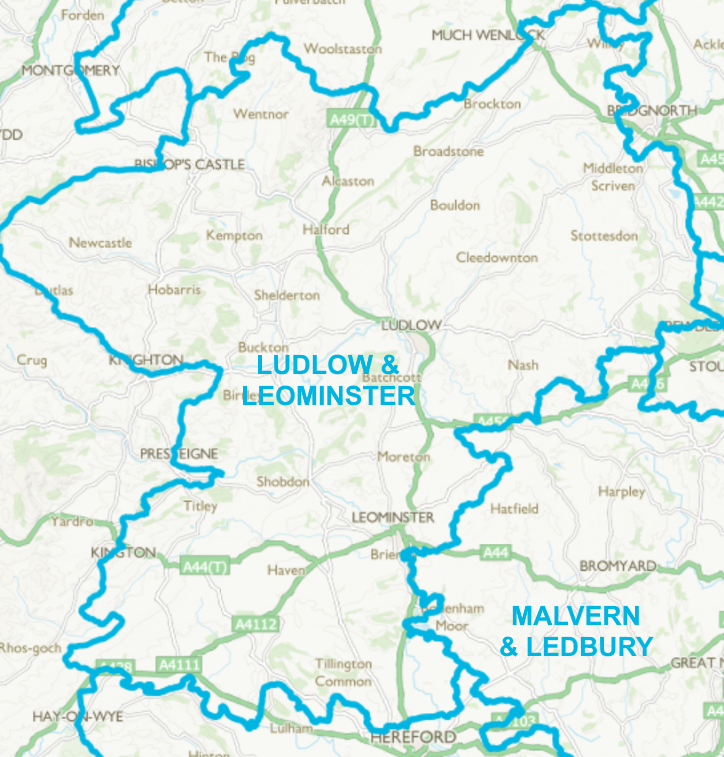Ludlow constituency is set to see major changes if proposals put forward by the Boundaries Commission are adopted by parliament. Nearly 8,000 people will be moved into the constituency from north Herefordshire and it will be renamed Leominster and Ludlow. Bridgnorth will join the Wrekin and Wellington. There are small expansions to Telford and Shrewsbury constituencies, while North Shropshire remains unchanged under the proposals.
The proposals
Ludlow will see major changes. It will lose Bridgnorth, though will now keep Much Wenlock. The south boundary will be extended south nearly as far as Hereford, bringing north Herefordshire and Leominster into the constituency. Part of the northwest of the constituency will transfer to Shrewsbury. The new constituency will be called Ludlow and Leominster and have an electorate of 73,503 (currently 65,787).
North Shropshire remains unchanged. Electorate 77,768.
Shrewsbury & Atcham is renamed Shrewsbury and extended southwest to take in Worthen and Chirbury, which are currently in the Ludlow constituency. Future electorate 77,830 (currently 75,528).
Telford will be extended north by a couple of miles to take in Hadley, Leegomery and Hortonwood. Future electorate 76,556 (currently 64,816).
Wrekin will lose north Telford and be extended south to take in Broseley and Bridgnorth. The new Bridgnorth and The Wrekin constituency will have an electorate of 73,850 (currently 65,008).
Will the changes happen?
The proposals are part of a review that aims to reduce the number of parliamentary constituencies from 650 to 600 and to ensure that the number of electors in each constituency is equal. Thirty-two seats will be lost in England. The move will save and estimated £10 million a year on a budget of £175 million for MPs salaries and expenses.[1]
The Boundary Commission for England is consulting on its proposed boundaries until 11 December. their final recommendations before submitting them to parliament in September 2018. Separate reviews have been underway in Wales, Scotland and Northern Ireland. If agreed by parliament, the new constituencies will be in use at the next scheduled general election in 2022.
There is a lot of uncertainty in this process. There is a shortage of parliamentary time over the next few years due to Brexit. Theresa May’s government doesn’t command a majority meaning she can’t drive the changes through. Some commentators have accused the Conservatives of gerrymandering the changes to increase their seats. According to the respected website Electoral Calculus, if the changes had been in place at the 2017 general election, Theresa May would had a majority of eight seats instead of having to rely on the Ulster Unionists to maintain a government. The Unionists are opposed to the changes. Labour and the Liberal Democrats have called on ministers to abandon plans. The Times has reported that Theresa May plans to drop the proposals and ask the Boundary Commission to keep 650 seats, redrawing the boundaries to make then equal.
Local MPs have mixed views. The Shropshire Star reported that Daniel Kawczynski, MP for Shrewsbury and Atcham, supports the proposals, Wrekin MP Mark Pritchard is sitting on the fence while Lucy Allen thinks they don’t work for Telford. Ludlow MP Philip Dunne criticised the proposal to include Bridgnorth with the Wrekin. He says: “I will make my own personal decision about which seat to contest when I know what the definitive boundaries will be.”
Notes
[1]. The House of Commons itself costs £249 million a year to run.



We must push to retain the 1/4 hour free dash to Bank ,Paper etc.
All Day parking in car parks for residents will not be helpful for visitors. When people choose to move to Ludlow one of their major concerns must be parking. No good complaining after the event !!!